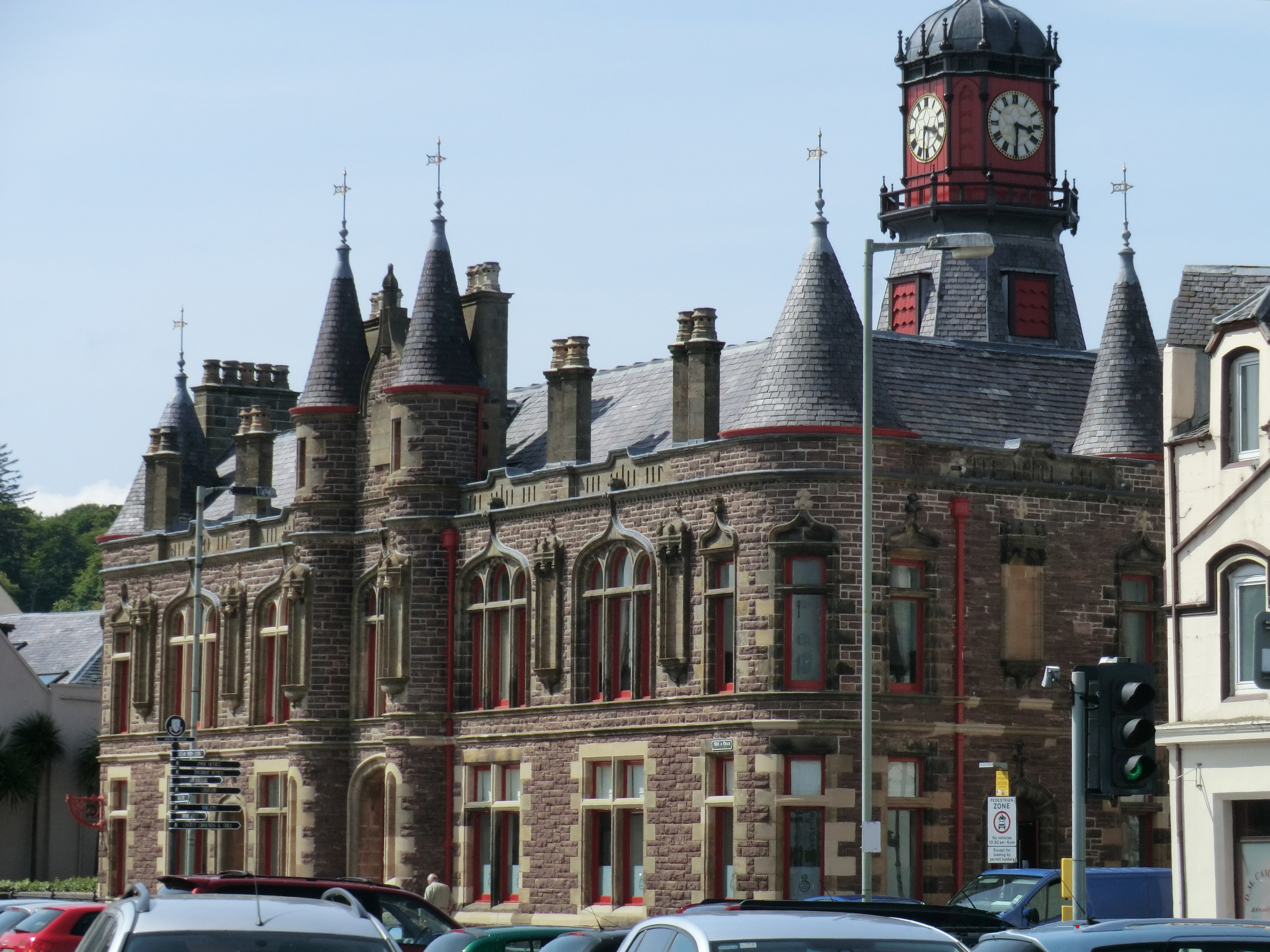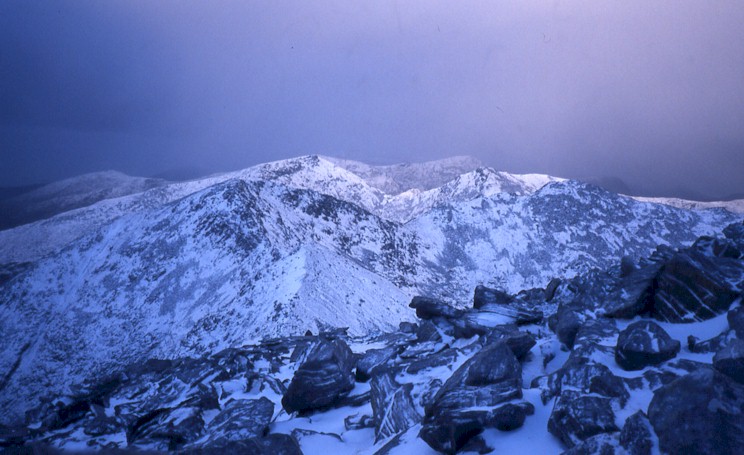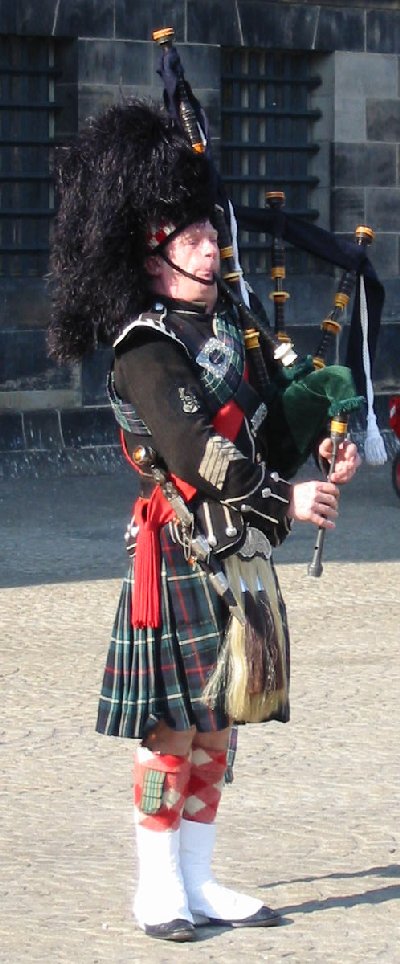|
Ailein Duinn
"Ailein duinn" ("Dark-haired Alan") is a traditional Scottish Gaelic song for solo female voice, a lament that was written for Ailean Moireasdan ("Alan Morrison") by his fiancée, Annag Chaimbeul ("Annie Campbell"). Ailean Moireasdan was a sea captain from the isle of Lewis. In the spring of 1788, he left Stornoway to go to Scalpay, Harris, where he was to be engaged to Annag Chaimbeul ("Annie Campbell"). Unfortunately, they sailed into a storm and all the crew sank with the vessel, off the coast of the Shiant Islands. The broken-hearted Annag wasted away through grief and composed this lament for her lost love. Annag lost her will to live and died a few months afterwards. Because there was not enough soil on the barren island of Scalpay, her father took her in her coffin by boat to a cemetery on the main island of Harris. However, a storm caused the coffin to be blown off her father's boat and it washed up on the same island her fiancé's body had been found. Lyrics There are many ... [...More Info...] [...Related Items...] OR: [Wikipedia] [Google] [Baidu] |
Scottish Gaelic
Scottish Gaelic ( gd, Gàidhlig ), also known as Scots Gaelic and Gaelic, is a Goidelic language (in the Celtic branch of the Indo-European language family) native to the Gaels of Scotland. As a Goidelic language, Scottish Gaelic, as well as both Irish and Manx, developed out of Old Irish. It became a distinct spoken language sometime in the 13th century in the Middle Irish period, although a common literary language was shared by the Gaels of both Ireland and Scotland until well into the 17th century. Most of modern Scotland was once Gaelic-speaking, as evidenced especially by Gaelic-language place names. In the 2011 census of Scotland, 57,375 people (1.1% of the Scottish population aged over 3 years old) reported being able to speak Gaelic, 1,275 fewer than in 2001. The highest percentages of Gaelic speakers were in the Outer Hebrides. Nevertheless, there is a language revival, and the number of speakers of the language under age 20 did not decrease between the 2001 and ... [...More Info...] [...Related Items...] OR: [Wikipedia] [Google] [Baidu] |
Isle Of Lewis
The Isle of Lewis ( gd, Eilean Leòdhais) or simply Lewis ( gd, Leòdhas, ) is the northern part of Lewis and Harris, the largest island of the Western Isles or Outer Hebrides archipelago in Scotland. The two parts are frequently referred to as if they were separate islands. The total area of Lewis is . Lewis is, in general, the lower-lying part of the island: the other part, Harris, is more mountainous. Due to its larger area and flatter, more fertile land, Lewis contains three-quarters of the population of the Western Isles, and the largest settlement, Stornoway. The island's diverse habitats are home to an assortment of flora and fauna, such as the golden eagle, red deer and seal, and are recognised in a number of conservation areas. Lewis has a Presbyterian tradition and a rich history. It was once part of the Norse Kingdom of the Isles. Today, life is very different from elsewhere in Scotland, with Sabbath observance, the Scottish Gaelic language and peat cutting retainin ... [...More Info...] [...Related Items...] OR: [Wikipedia] [Google] [Baidu] |
Stornoway
Stornoway (; gd, Steòrnabhagh; sco, Stornowa) is the main town of the Western Isles and the capital of Lewis and Harris in Scotland. The town's population is around 6,953, making it by far the largest town in the Outer Hebrides, as well as the third largest island town in Scotland after Kirkwall in Orkney and Lerwick in Shetland. The traditional civil parish of Stornoway, which includes various nearby villages, has a combined population of just over 10,000. The Comhairle nan Eilean Siar measures population in a different area: the ''Stornoway settlement'' area, Laxdale, Sandwick and Newmarket; in 2019, the estimated population for this area was 6,953. Stornoway is an important port and the major town and administrative centre of the Outer Hebrides. It is home to ''Comhairle nan Eilean Siar'' (the Western Isles Council) and a variety of educational, sporting and media establishments. Until relatively recently, observance of the Christian Sabbath (Sunday) has been associate ... [...More Info...] [...Related Items...] OR: [Wikipedia] [Google] [Baidu] |
Scalpay, Outer Hebrides
Scalpay (; gd, Sgalpaigh or ''Sgalpaigh na Hearadh''; i.e. "Scalpay of Harris" to distinguish it from Scalpay off Skye) is an island in the Outer Hebrides of Scotland. Toponym Mac an Tàilleir (2003) suggests the name derives from "ship island" from the Norse. However, Haswell-Smith states that the Old Norse name was ''Skalprøy'', meaning "scallop island". Geology and geography Scalpay is around long and rises to a height of at Beinn Scorabhaig. The area of Scalpay is . The main settlement on the island is at the north, near the bridge, clustered around ''An Acairseid a Tuath'' (North Harbour). The bedrock of northwest and of southeast Scalpay is Archaean gneiss belonging to the Lewisian Complex. Across the centre of the island is a band of mylonite and protocataclasite associated with the Outer Hebrides Thrust Zone. Some restricted occurrences of amphibolite and ultramafic rocks are also present. A number of tholeiitic dykes of Tertiary age cross the island with ... [...More Info...] [...Related Items...] OR: [Wikipedia] [Google] [Baidu] |
Harris, Outer Hebrides
Harris ( gd, Na Hearadh, ) is the southern and more mountainous part of Lewis and Harris, the largest island in the Outer Hebrides, Scotland. Although not an island itself, Harris is often referred to in opposition to the ''Isle of Lewis'' as the Isle of Harris, which is the former postal county and the current post town for Royal Mail postcodes starting HS3 or HS5. The civil parish of Harris is considered to include St Kilda, an uninhabited archipelago west-northwest of North Uist, and the uninhabited islet Rockall, which is west of North Uist. Etymology Harris originates from the Old Norse name Harri, the diminutive of the name Harald. Variants are the Dutch Harrie and the Flemish Hariche. Refer also to country and source abbreviations on page 15 These names derive from the Old Norse root word " hár", meaning "high", with the comparative being "hærri". In the English language name, the addition of the "s" once indicated the plural. The Vikings arrived in the British Isl ... [...More Info...] [...Related Items...] OR: [Wikipedia] [Google] [Baidu] |
Shiant Islands
The Shiant Islands (; gd, Na h-Eileanan Mòra or ) or Shiant Isles are a privately owned island group in the Minch, east of Harris in the Outer Hebrides of Scotland. They are southeast of the Isle of Lewis.Keay, J. & Keay, J. (1994) ''Collins Encyclopaedia of Scotland''. London. HarperCollins. Etymology The name ''Shiant'' is from the Scottish Gaelic , which means the "charmed", "holy" or "enchanted isles". The group is also known as , "the big isles". The main islands are Garbh Eilean ("rough island") and Eilean an Taighe ("house island"), which are joined by a narrow isthmus, and Eilean Mhuire ("island of the Virgin Mary") to the east. Eilean an Taighe was called ''Eilean na Cille'' ("island of the church") prior to the 19th century.Haswell-Smith (2004) pp. 275-76 A 17th-century chart by John Adair and several other 18th-century charts call Garbh Eilean ''Nunaltins Isle'', Eilean Mhuire ''St Marys Isle'' and Eilean an Taighe ''St Columbs Isle''. This last name suggests tha ... [...More Info...] [...Related Items...] OR: [Wikipedia] [Google] [Baidu] |
Rob Roy (1995 Film)
''Rob Roy'' is a 1995 American historical biographical drama film directed by Michael Caton-Jones. It stars Liam Neeson as Rob Roy MacGregor, an 18th-century Scottish clan chief who battles a sadistic nobleman in the Scottish Highlands. Jessica Lange, John Hurt, Tim Roth, Eric Stoltz, Brian Cox, and Jason Flemyng also star. Roth won the BAFTA Award for Best Actor in a Supporting Role and was nominated for the Academy Award for Best Supporting Actor for his portrayal of the aristocrat Archibald Cunningham. The film is dedicated to two Scotsmen: film director Alexander MacKendrick and football player and manager Jock Stein. Plot In Scotland, 1714, Robert Roy MacGregor is Chief of Clan MacGregor. Although providing the Lowland gentry with protection against cattle rustling, he barely manages to feed his people. Hoping to alleviate their and his poverty, MacGregor borrows £1,000 from James Graham, Marquess of Montrose, to establish himself as a cattle raiser and trader. Want ... [...More Info...] [...Related Items...] OR: [Wikipedia] [Google] [Baidu] |
Non-lexical Vocables In Music
Non-lexical vocables, which may be mixed with meaningful text, are a form of nonsense syllable used in a wide variety of music. Common English examples would be "la la la", "na na na" or "da da da". Traditional music Non-lexical vocables are used in yodeling, Blackfoot music and other Native American music, Pygmy music, the music of the Maldives. In Irish traditional music and Highland Scots music, it is called lilting, and in English traditional music it is called diddling. Vocables frequently act as formal markers, indicating the beginning and end of phrases, sections or songs themselves, and also as onomatopoeic references, cueing devices, and other purposes. The Blackfoot, like other Plains Indians, use the consonants ''h'', ''y'', ''w'', and vowels. They avoid ''n'', ''c'' (''ts'') and other consonants. ''i'' and ''e'' tend slightly to be higher pitches, ''a'', ''o'', and ''u'' lower ones. The AIM Song has its origins in the Plains; as such, it holds similar character ... [...More Info...] [...Related Items...] OR: [Wikipedia] [Google] [Baidu] |
Songs Released Posthumously
A song is a musical composition intended to be performed by the human voice. This is often done at distinct and fixed pitches (melodies) using patterns of sound and silence. Songs contain various forms, such as those including the repetition and variation of sections. Written words created specifically for music, or for which music is specifically created, are called lyrics. If a pre-existing poem is set to composed music in classical music it is an art song. Songs that are sung on repeated pitches without distinct contours and patterns that rise and fall are called chants. Songs composed in a simple style that are learned informally "by ear" are often referred to as folk songs. Songs that are composed for professional singers who sell their recordings or live shows to the mass market are called popular songs. These songs, which have broad appeal, are often composed by professional songwriters, composers, and lyricists. Art songs are composed by trained classical composers fo ... [...More Info...] [...Related Items...] OR: [Wikipedia] [Google] [Baidu] |
Scottish Folk Songs
Scotland is internationally known for its traditional music, which remained vibrant throughout the 20th century and into the 21st, when many traditional forms worldwide lost popularity to pop music. In spite of emigration and a well-developed connection to music imported from the rest of Europe and the United States, the music of Scotland has kept many of its traditional aspects; indeed, it has itself influenced many forms of music. Many outsiders associate Scottish folk music almost entirely with the Great Highland Bagpipe, which has long played an important part in Scottish music. Although this particular form of bagpipe developed exclusively in Scotland, it is not the only Scottish bagpipe. The earliest mention of bagpipes in Scotland dates to the 15th century although they are believed to have been introduced to Britain by the Roman armies. The ''pìob mhór'', or Great Highland Bagpipe, was originally associated with both hereditary piping families and professional pipers t ... [...More Info...] [...Related Items...] OR: [Wikipedia] [Google] [Baidu] |
Scottish Gaelic Music
Scottish usually refers to something of, from, or related to Scotland, including: *Scottish Gaelic, a Celtic Goidelic language of the Indo-European language family native to Scotland *Scottish English *Scottish national identity, the Scottish identity and common culture *Scottish people, a nation and ethnic group native to Scotland *Scots language, a West Germanic language spoken in lowland Scotland *Symphony No. 3 (Mendelssohn), a symphony by Felix Mendelssohn known as ''the Scottish'' See also *Scotch (other) *Scotland (other) *Scots (other) *Scottian (other) *Schottische The schottische is a partnered country dance that apparently originated in Bohemia. It was popular in Victorian era ballrooms as a part of the Bohemian folk-dance craze and left its traces in folk music of countries such as Argentina ("chotis"Span ... * {{disambiguation Language and nationality disambiguation pages ca:Escocès ... [...More Info...] [...Related Items...] OR: [Wikipedia] [Google] [Baidu] |





